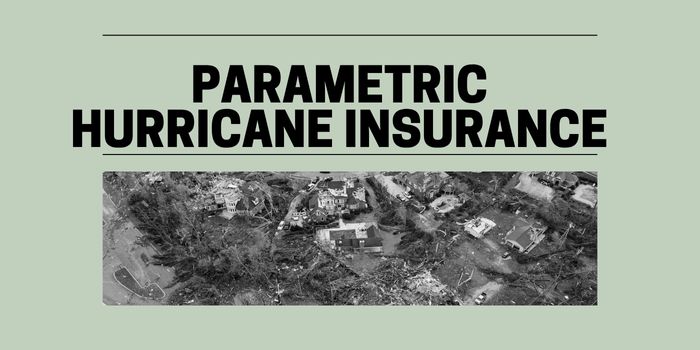Every summer, as hurricanes start brewing in the Atlantic, there’s a familiar sense of concern especially for people and businesses in coastal areas. The storms seem stronger each year, and the financial toll keeps climbing. Insurance companies, reinsurers, and investors are all looking for better ways to prepare and protect themselves, and recently, parametric insurance backed by cutting edge catastrophe modeling has started making a real difference.

Imagine you’re a small business owner in Florida. Traditional insurance requires an adjuster to come out, inspect the damage, and decide what your payout should be a process that can take weeks or months. Parametric insurance works differently. Instead of a long back and forth, you agree ahead of time: if the wind speed in your area hits a certain threshold, your policy pays out, no questions asked.
This approach offers a few clear benefits:
- Faster payouts: No waiting for loss assessments. You get the money quickly, usually within days.
- Transparency: You know exactly what triggers a payment, so there’s no confusion or debate.
- Flexibility: You can spend the payout however you need whether that’s repairing damages, covering payroll, or dealing with supply chain hiccups without restrictions.
Parametric Hurricane Insurance
As mentioned above, parametric policies are speedy and transparent. the event parameters are typically reported by public agencies, like the National Hurricane Center, which publish hurricane tracks and maximum sustained wind speeds. These policies are customizable and we can target payouts for specific events you’re interested in, and those payouts can cover many types of losses, sometimes ones that traditional policies can’t.
Parametric Insurance for Homeowners
The Role of Better Weather Data and Modeling
It’s not just about the concept the technology behind it makes a real difference, too. Insurers use modern modeling tools, which give super detailed wind speed maps and forecasts that are updated in real time. Data from past hurricanes also helps them set up fair policies and explain exactly how everything works.
This tech isn’t just impressive. It helps everyone insurers, brokers, and policyholders make smarter decisions, from pricing policies to knowing when a storm really threatens their area.
Who’s Actually Using This Stuff?
You might think parametric insurance is just for big corporations, but more city governments, non-profits, and smaller businesses are signing up. Even with budgets stretched thin, they know that a speedy, predictable payout after a storm can make all the difference for repairs, keeping people on payroll, or just getting back on their feet.
Tackling “Basis Risk” So Payouts Actually Match Losses
There’s one catch: sometimes, the trigger (like wind speed at one spot) doesn’t quite line up with someone’s actual losses further away. That’s called “basis risk,” and it’s a common concern. But thanks to better data and more granular wind maps, insurers are getting smarter about minimizing those mismatches making for fairer and more reliable payouts.
Parametric Insurance Is on the Rise
All these factors are driving a big shift. More brokers now offer parametric options right on their platforms so it’s easier than ever for organizations of all sizes to add this protection to their risk management plans. The democratization of catastrophe insurance is underway.
A Real Life Example: Hurricane Ian (2022)
Let’s go back to Hurricane Ian. The storm was unpredictable, and its winds hit places harder than usual. Instead of scrambling to figure out who qualified for payouts, parametric insurers could quickly process claims based on up-to-date, independent wind speed data. That helped both parametric and traditional insurers prioritize relief and get communities back on track faster.
Final Words
Will parametric insurance fully replace traditional policies? Probably not but it’s becoming a key piece of the puzzle. As storm risks keep changing and insurance gets trickier (and pricier), these solutions offer something everyone craves: clarity, speed, and confidence.
| Feature | Parametric Insurance | Traditional Insurance |
|---|---|---|
| Claims Settlement Speed | Days to weeks | Weeks to months |
| Trigger Mechanism | Measurable event (e.g. wind) | Damage and loss assessment |
| Basis Risk | Reduced (high-res modeling) | Varied (loss assessment) |
| Use of Funds | Flexible (any loss/expenditure) | Often restricted |
| Scalability | High (ILS reinsurance, cat bonds) | Limited |
| Coverage Gaps Addressed | Yes (esp. indirect/uninsured) | No (many gaps remain) |